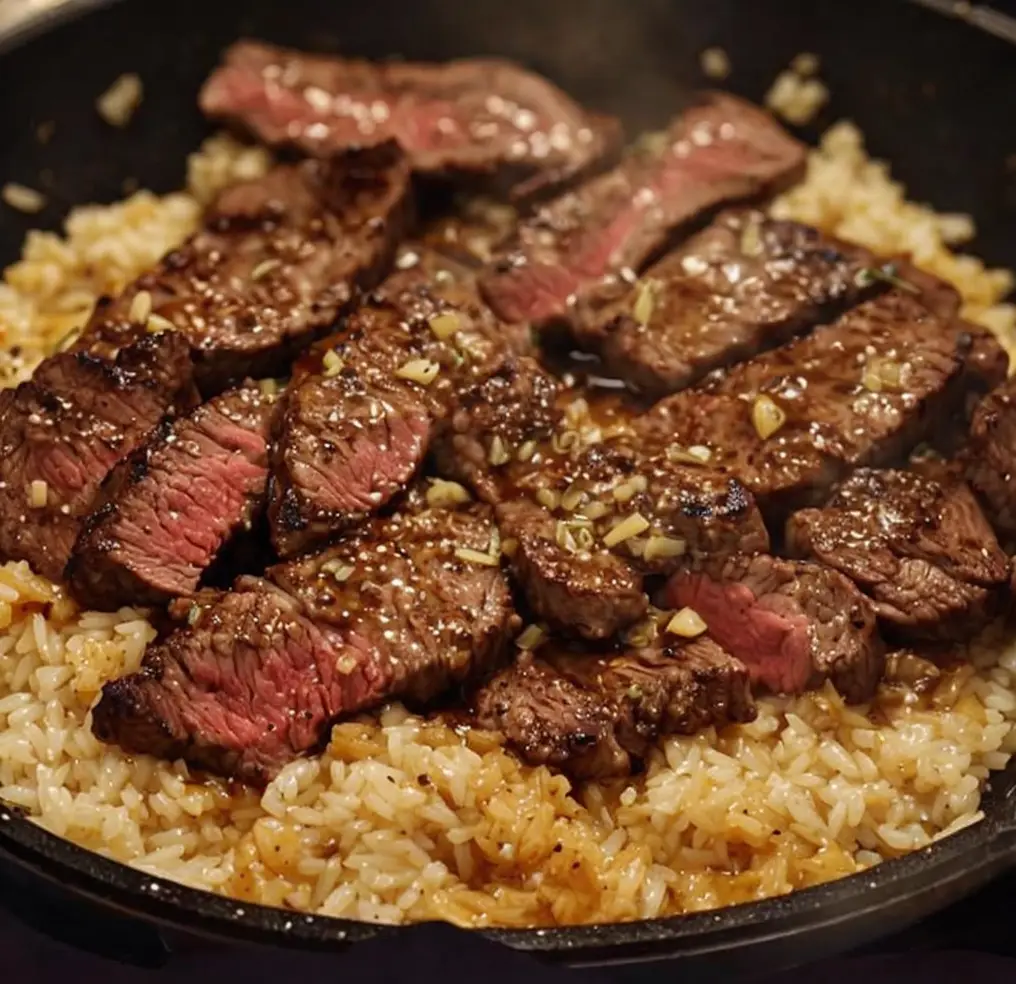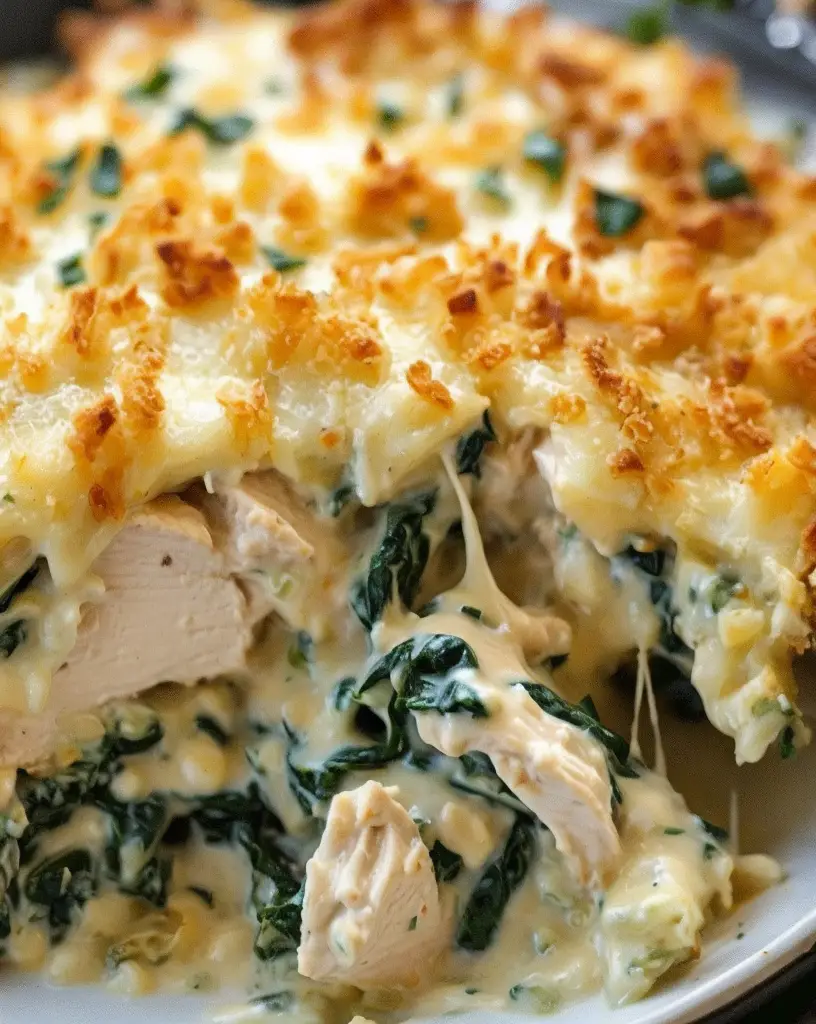Delicious Chocolate Lava Cake: Indulge in Warm, Gooey Goodness
There’s nothing quite as satisfying as breaking through a warm, chocolate shell to reveal the gooey, molten center of a rich chocolate lava cake. This decadent dessert is perfect for special occasions, romantic dinners, or simply when you’re craving something truly indulgent. With its perfect balance of sweetness and chocolate intensity, this lava cake invites you to savor every bite, creating an experience that is not only delicious but also memorable.
Imagine the feeling of a warm, fudgy cake melting in your mouth, the luxurious chocolate flowing into your palate. Each forkful combines different textures, from the firm outer layer to the soft, velvety inside. Baking these cakes might seem daunting, but fear not! This recipe is designed for both novices and experienced bakers who want to impress without investing hours in the kitchen.
Quick Recipe Highlights
- Flavor Profile: Rich, bittersweet chocolate with hints of vanilla and a luscious melted core.
- Texture: A crispy exterior that gives way to a silky, creamy center.
- Aroma: The decadent smell of melting chocolate mixed with buttery goodness fills the kitchen.
- Visual Appeal: Elegant individual cakes topped with a dusting of powdered sugar or a scoop of vanilla ice cream.
- Skill Level Needed: Intermediate due to the precise timing required for baking.
- Special Equipment: Ramekins, a mixing bowl, and a whisk.
Recipe Overview
- Difficulty Level: This chocolate lava cake recipe is classified as intermediate, with a focus on precise baking time. It’s essential to monitor the baking to ensure the centers remain molten.
- Category: This dessert fits beautifully into the category of delectable sweets, ideal for dinners or festive gatherings.
- Cuisine: Both French and American influences are present in this dish, showcasing global appreciation for chocolate desserts.
- Cost: Approximately $10 to $15, depending on ingredient quality, offering a lavish treat without breaking the bank.
- Season: Ideal for warm weather and cozy winter nights, as chocolate feels indulgent year-round.
- Occasion: Perfect for birthdays, anniversaries, and even holidays when you want to treat yourself and your loved ones.
Why You’ll Love This Recipe
This chocolate lava cake is the ultimate indulgence, combining rich flavors and an unforgettable texture. The sweet, creamy chocolate that flows from within creates an experience that is both nostalgic and luxurious. Each bite captures your essence of dessert perfection.
Not only is this dish delectable, but it’s also incredibly convenient. With a minimal prep time and straightforward baking steps, you can whip up these individual cakes with ease. Perfect for last-minute dessert plans or unexpected guests!
From a nutritional standpoint, dark chocolate offers several benefits, including antioxidants that promote heart health. When enjoyed in moderation, this decadent dessert can be part of a balanced diet.
Socially, this chocolate lava cake is a crowd-pleaser. It’s a wonderful centerpiece to share with friends and family, making dinner parties feel more intimate and connected as you all dig into warm, delightful cakes together.
Cost-effectiveness also stands out; for an impressive dessert, the ingredients required are simple. Buying quality chocolate doesn’t have to break the bank, allowing you to treat yourself without guilt!
Historical Background and Cultural Significance
Originating in the United States, the chocolate lava cake became popular in the 1980s and has since spread worldwide. Many believe its inspiration lies in the classic French chocolate fondant.
Culturally, the cake reflects the rich history of chocolate, which has roots in ancient civilizations that revered this delightful ingredient. Today, it stands as a symbol of indulgence and celebration.
Over the years, the recipe has evolved, with variations popping up in various cuisines. While chocolate remains the star, different fillings and presentations add unique spins to the classic dish.
Regional variations include spicy or alcoholic infusions, showcasing local flavors. A touch of chili powder or a splash of rum can transform this dessert into a personal signature for any baker.
Ingredient Deep Dive
Dark Chocolate: Revered for its rich flavor, dark chocolate is integral to this recipe. Not only does it provide a delightful taste, but it also contains less sugar than milk chocolate, making it a healthier option. Choose high-quality chocolate for the best results.
Selection Tips: Look for chocolate with a cocoa content of 70% or higher for a robust flavor. Store in a cool, dry place, away from strong odors to preserve its integrity.
Eggs: Essential for binding and providing structure in the dessert. They’re what gives the cake its rise and helps achieve that perfect molten center.
Nutritional benefits include protein and beneficial fats, so consider relying on free-range options for better overall quality. Store eggs in their carton to allow for proper airflow.
Common Mistakes to Avoid
- Overbaking: This is the most common mistake. Keep an eye on the timer and check the cakes a minute or two before the suggested cook time.
- Undermixing: Ensure all ingredients are fully combined for a consistent texture by mixing until smooth.
- Using cold eggs: Eggs must be at room temperature to blend seamlessly into the batter. Allow them to sit out for at least 30 minutes.
- Greasing ramekins improperly: Without proper greasing, cakes can stick, ruining their shape. Use butter to coat the insides thoroughly.
- Skipping the resting time: Allowing the cakes to cool slightly before serving ensures stability, keeping molten centers intact.
- Serving too hot: This dessert tastes best when slightly cooled, allowing the chocolate to better set while remaining gooey inside.
- Ignoring the chocolate quality: Cheap chocolate will lead to a less flavorful outcome. Invest in high-quality chocolate for delicious results.
- Using all-purpose flour in excess: Too much flour may affect the texture, leading to a dry cake. Measure accurately and sift if needed.
Essential Techniques
Melting Chocolate: It’s crucial to melt chocolate consistently to prevent burning. Use a double boiler or microwave on low power, stirring frequently until fully melted and smooth.
Baking Time: Perfecting your timing is vital for achieving that gooey center. Use a toothpick to test; it should come out slightly sticky.
Pro Tips for Perfect Chocolate Lava Cake
- Preheat your oven and remember to adjust racks for even heat distribution.
- Chill the ramekins if you’re baking a large batch; this slows baking to ensure centers stay soft without the outer layer becoming dry.
- For added flavor, consider adding a splash of espresso or orange liqueur to the batter.
- Experiment with different fillings, such as peanut butter or caramel for creative variations.
- Dust with cocoa powder instead of flour to create a rich chocolate crust.
- Don’t forget the scoop of vanilla ice cream to complement the lava cake perfectly.
- Allow your cakes to cool for a few minutes for easier unmolding.
- Introduce a dollop of whipped cream to add a creamy texture when serving.
Variations and Adaptations
Consider trying a molten caramel lava cake by substituting rich caramel for the chocolate center. For a fruity twist, introduce raspberry or cherry filling that complements the chocolate beautifully.
Seasonal adaptations can involve including spices like cinnamon or nutmeg in the batter during the colder months for added warmth. During the summer, incorporating zesty flavors can make it refreshing.
Dietary modifications are also easy; explore gluten-free or vegan options by substituting traditional ingredients with almond flour or aquafaba.
For those craving different textures, you can sprinkle nuts or chocolate chips into the batter for an added crunch. Simple surface decorations with icing or ganache can elevate your presentation.
Serving and Presentation Guide
Plating techniques play a significant role in impressing guests. Use a dessert plate, and carefully center the cake before drizzling it with chocolate sauce and a dusting of powdered sugar.
Consider garnishing with fresh berries or mint leaves for a contrasting color burst and added freshness. Traditional accompaniments like vanilla ice cream or chocolate drizzle elevate the dessert.
Temperature considerations are essential; serve the cakes warm to keep the center gooey while balancing with cold toppings.
Portion control tips often mean serving individual ramekins, allowing guests to enjoy their cake while maintaining a clean, elegant presentation.
Wine and Beverage Pairing
Rich desserts like chocolate lava cake pair beautifully with bold wines. A full-bodied Cabernet Sauvignon enhances the chocolate, while a heavier dessert wine such as Port can provide a delightful contrast.
Non-alcoholic alternatives, such as a rich hot cocoa or a creamy vanilla latte, offer comforting pairings that complement the cake’s intense flavors.
For coffee lovers, a robust espresso can perfectly balance the sweetness, further enhancing the overall experience.
Storage and Shelf Life
The best way to store chocolate lava cakes is in their ramekins, covered with plastic wrap to prevent drying. They are best consumed within 2-3 days for optimal taste.
Cold storage should occur in the refrigerator, keeping them fresh. Ensure proper reheating options exist, as microwaving briefly on low can restore warmth without affecting texture.
Freezing your unbaked lava cakes for up to a month is acceptable. Just wrap them well and allow for a longer cooking time when preparing from frozen.
Make Ahead Strategies
Prep timelines can involve making the batter a day in advance and refrigerating it, allowing the flavors to meld. Just bake right before serving!
Storing between steps includes keeping prepared ingredients in the fridge and letting them come to room temperature before baking for the best results.
Quality impacts may vary; ingredients like heavy cream can lose airiness over time. Aim to whip freshly when treating guests.
Assembly can be fairly simple; divide the mix into ramekins and chill until you’re ready to bake, maintaining convenience without sacrificing taste.
Scaling Instructions
Halving the recipe can lead to perfect results for smaller gatherings. Simply adjust amounts while maintaining proper ratios of ingredients.
When doubling or tripling, ensure ramekins fit on your baking sheet, increasing baking time slightly while monitoring closely.
Equipment adjustments may involve extending baking time or adjusting oven settings, so stay vigilant while baking larger batches.
Timing modifications include understanding that larger cakes may require longer to cook, primarily focusing on those gooey centers.
Nutritional Deep Dive
The macro breakdown reveals a balance of healthy fats from chocolate and eggs, along with carbohydrates from the flour. A single serving generally contains around 350–400 calories.
Micronutrient analysis shows vitamins from eggs and antioxidants in dark chocolate, contributing positively to overall health perceptions.
Health benefits of dark chocolate include heart-healthy properties due to flavonoids, making it a more guilt-free indulgence.
Dietary considerations should encompass calorie counting and carbohydrate management for health-conscious individuals.
Portion analysis aids in management; enjoy in moderation as part of indulgent desserts occasionally to support a balanced diet.
Dietary Adaptations
For a gluten-free version, substitute all-purpose flour with almond flour or another gluten-free blend, ensuring the cakes retain their rich texture.
Dairy-free adaptations can include coconut oil and almond milk, providing an alternative that doesn’t compromise flavor.
Vegan options allow for the use of aquafaba (whipped chickpea water) instead of eggs and adaptable vegan chocolate brands for excellent results.
Low-carb and keto diets can substitute sugar with a suitable sweetener, creating a dessert that aligns with dietary preferences.
Paleo followers may explore almond flour and raw honey, crafting a deliciously compliant dessert without sacrificing pleasure.
Low-FODMAP variations can include lactose-free ingredients to maintain gut harmony while enjoying a delicious treat.
Troubleshooting Guide
If your lava cake seems too firm, it suggests overbaking; next time, reduce the time slightly, checking a moment earlier. To fix flavor balance issues, enhance it with a touch of salt to fine-tune sweetness.
Temperature problems might arise when cakes remain cold in the center. A reliable thermometer could help check for readiness better than visual cues alone.
For equipment challenges, ensure the oven’s even heat distribution by avoiding overcrowding on baking sheets, allowing hot air to circulate better.
Ingredient substitutions can shift textures; using lower-quality chocolate impacts melting and overall flavor. Always use high-quality chocolate for the best result.
Recipe Success Stories
Community feedback highlights the ease of preparation and the enjoyment factor across the board, inspiring many bakers to make this recipe a staple at gatherings.
Variation successes often come from creative fillings, with new flavors introduced, keeping this classic dessert refreshing and exciting.
Many readers share adaptation stories, revealing personal touches and family secrets that enhance the recipe, proving its versatility.
Photography tips provided by readers emphasize capturing that delightful molten center, encouraging others to let their creativity shine through in presentation.
Frequently Asked Questions
How do I ensure my lava cake has a gooey center? Timing is crucial; make sure you keep an eye on the cakes as they near completion. A slight jiggle in the center indicates doneness.
Can I make chocolate lava cake in advance? Yes, you can prepare the batter ahead of time and refrigerate it. Bake right before serving for the best experience.
What if my chocolate lava cake comes out too dry? This usually means it was overbaked. Reduce the time by 1-2 minutes next time while checking for gooeyness near the end of baking.
Could I use milk chocolate instead of dark chocolate? While possible, the flavor will differ, leading to a sweeter cake. Dark chocolate generally works best for this recipe.
Are there gluten-free options for this recipe? Absolutely! Use a gluten-free flour blend or almond flour to achieve similar results.
What can I substitute for eggs in a vegan version? Aquafaba works very well in place of eggs, providing needed binding and moisture.
Can I add other flavors to this cake? Yes! Consider adding espresso, vanilla, or even spices like cinnamon for exciting variations.
How can I improve the presentation of my lava cake? Use a dusting of powdered sugar, fresh berries, or a scoop of ice cream to elevate your dessert visually.
What is the best way to store leftovers? Cover your ramekins tightly and store them in the refrigerator. Reheat gently before serving.
Can I use silicone molds instead of ramekins? Yes, silicone molds can work beautifully, allowing for easy release when serving.
Additional Resources
Seeking related recipes? Consider exploring brownie recipes or chocolate fondant ideas for more indulgent treats.
Technique guides can help you master baking basics, elevating your overall dessert game.
Ingredient information can add depth to your cooking knowledge, increasing the quality of your dishes as you understand each component.
Equipment recommendations cover essential baking tools, assisting in proper preparation for fantastic outcomes.
Seasonal variations can inspire your baking as you incorporate seasonal flavors like pumpkin or peppermint for festive occasions.
Join the Conversation
Sharing on social media boosts community engagement, allowing you to connect with other food enthusiasts while showcasing delicious results.
Consider photography tips shared by the community that emphasize visual appeal and inspire others to replicate your successful chocolate lava cake.
Encourage recipe reviews that provide valuable insights for improving and adapting this cake to personal tastes and preferences.
Community engagement drives creativity, allowing bakers to let their imaginations roam free and invent new personal spins on this classic recipe.
The Recipe
Chocolate Lava Cake
Serves: 4
Prep Time: 15 mins
Cook Time: 10 mins
Total Time: 25 mins
Kitchen Equipment Needed
- Ramekins
- Mixing bowl
- Whisk
- Double boiler or microwave-safe bowl
- Baking sheet
Ingredients
- 1/2 cup unsalted butter
- 1 cup dark chocolate chips (70% cocoa)
- 1 cup powdered sugar
- 2 whole eggs
- 2 egg yolks
- 1 teaspoon vanilla extract
- 1/2 cup all-purpose flour
- Pinch of salt
Directions
- Preheat the oven to 425°F (220°C) and grease the ramekins with butter.
- In a double boiler, melt the butter and dark chocolate, stirring until smooth.
- Remove from heat and mix in powdered sugar until well combined.
- Add eggs, egg yolks, and vanilla extract; whisk until smooth and fluffy.
- Gently fold in flour and salt until no lumps remain.
- Divide mixture among ramekins, filling them halfway full.
- Bake for 10-12 minutes until edges are firm but the center is soft.
- Remove from oven, let cool for 1 minute, then invert onto plates.
- Serve warm, with ice cream or whipped cream if desired.
Recipe Notes
- For a richer flavor, use high-quality dark chocolate.
- Experiment with flavored chocolate chips for unique variations.
- You can prepare the batter a day in advance and refrigerate until ready to bake.




